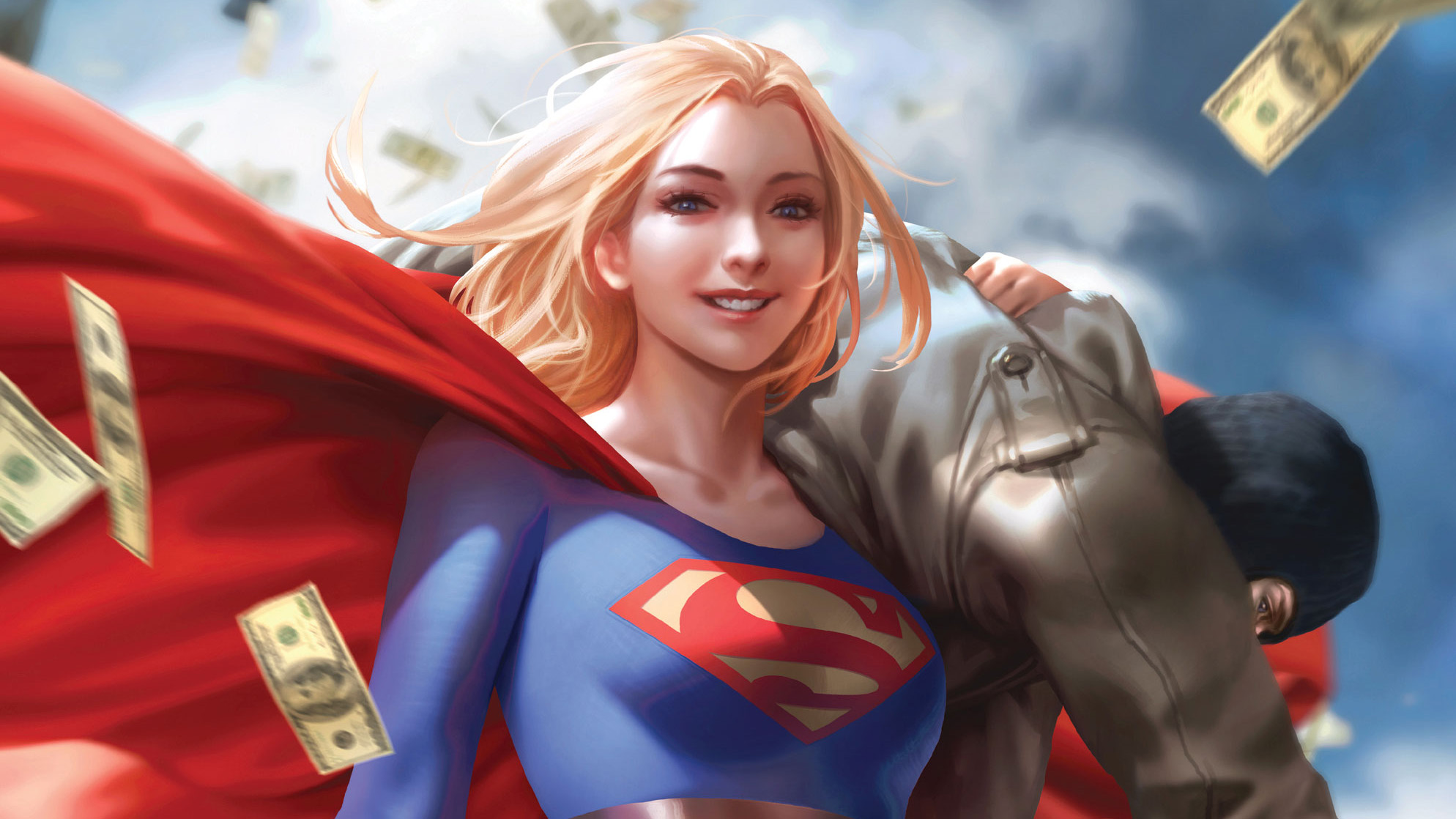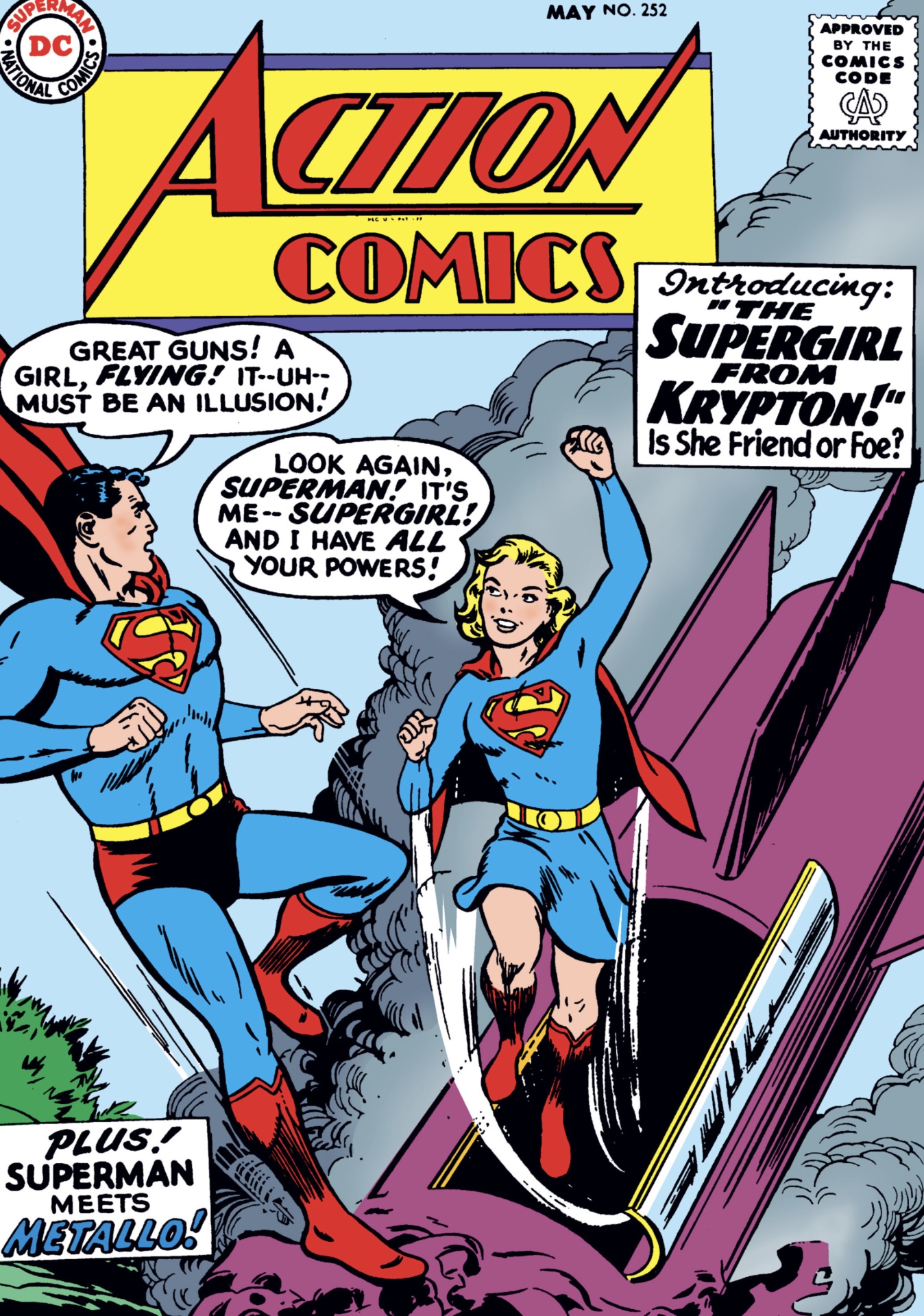Supergirl - the comic history of Kara Zor-El
Learn about the comic book origins of Supergirl

It's official! We have a new big screen Supergirl. House of the Dragon actor Milly Alcock has been cast as Kara Zor-El and is rumored to appear in James Gunn's upcoming Superman: Legacy film before taking the lead in her own feature, Supergirl: Woman of Tomorrow. Alcock follows hot on the heels of Sasha Calle's memorable - if sadly short-lived - appearance as the character in last year's The Flash.
With a publishing history dating all the way back to 1959 that encompasses multiple different incarnations of the character and several previous high profile film and TV adaptations, the history of Supergirl is a lot to take in. Join us now then as we take a quick look back at Kara's comic book origins and her story so far.

Before the debut of the first official Supergirl, there were several versions in Golden Age DC lore, most of whom were gimmick characters who only lasted an issue or two before their stories were done. But positive reception to the concept of the character - a female counterpart to Superman - led to the introduction of Superman's cousin Kara in 1959's Action Comics #252 (the Zor-El surname would be added later).
Created by writer Otto Binder and Al Plastino (who had also previously created Shazam's superheroic sister Mary Marvel for then DC rival Fawcett Comics years prior), Kara was a Kryptonian who had survived the death of Krypton just like Superman, with all his powers to boot.
Just how Kara managed to survive Krypton exploding has changed over the years across different eras of DC continuity. Originally, Kara was a resident of Argo City, an entire Kryptonian city that had managed to break off from the dying planet and survive as its own self-sustaining colony through Kryptonian super-science.
Though this detail has more or less held true through most of Kara's incarnations, the circumstances of her meeting with Superman are a bit more fluid. In her most common origin, she's sent off in a survival pod much like Kal-El's own but already a teenager, rather than an infant.
This has resulted in a common aspect of her origin being that Kara only remembers Kal-El as an infant, expecting to mentor him to adulthood when she finally meets him - only to discover that because of Kal-El's time on Earth as Clark Kent, he's aged to adulthood while she's still a teenager, leading him to mentor her in the ways of being a superhero.
Get the best comic news, insights, opinions, analysis and more!

Supergirl has come to television and even movies before. In 1984, amidst the success of Christopher Reeve's Superman films, Helen Slater was cast as Kara Zor-El in her own Supergirl spin-off film. Though that movie wasn't a hit, it's since become something of a cult classic.
Helen Slater would later go on to guest star in The CW's now concluded Supergirl TV show, in which Melissa Benoist played the title character for six seasons between 2015 and 2021.
More recently in comics, writer Tom King and artist Bilquest Evely's limited series Supergirl: Woman of Tomorrow shone the spotlight on Kara Zor-El as she carves out her own path as a hero. The story really delves into Kara, highlighting her differences from Superman (who does not appear) as well as her similarities. She's tougher in some ways, not as clean cut as Clark, while still adhering to a similar moral code.
That's the version that will be adapted into a movie as part of James Gunn and Peter Safran's new DC Studios, eschewing The Flash's alt-reality take on the character in the process. That's a bit of a shame, as Sasha Calle was one of the real highlights of that movie and embodied a similar grit to the recent comic book version.
Still, we have an all new big screen Supergirl to look forward to in the new DCU and Milly Alcock is a fantastic actor. We can't wait to see what she brings to the role.
James Gunn reportedly loved Milly Alcock's "edge" in House of the Dragon, and that makes us very excited for the DCU's version of Supergirl.
I've been Newsarama's resident Marvel Comics expert and general comic book historian since 2011. I've also been the on-site reporter at most major comic conventions such as Comic-Con International: San Diego, New York Comic Con, and C2E2. Outside of comic journalism, I am the artist of many weird pictures, and the guitarist of many heavy riffs. (They/Them)



